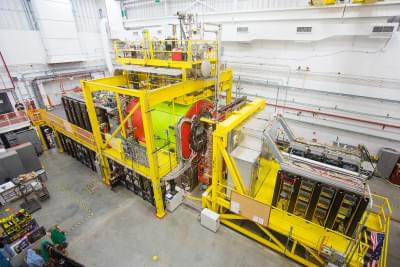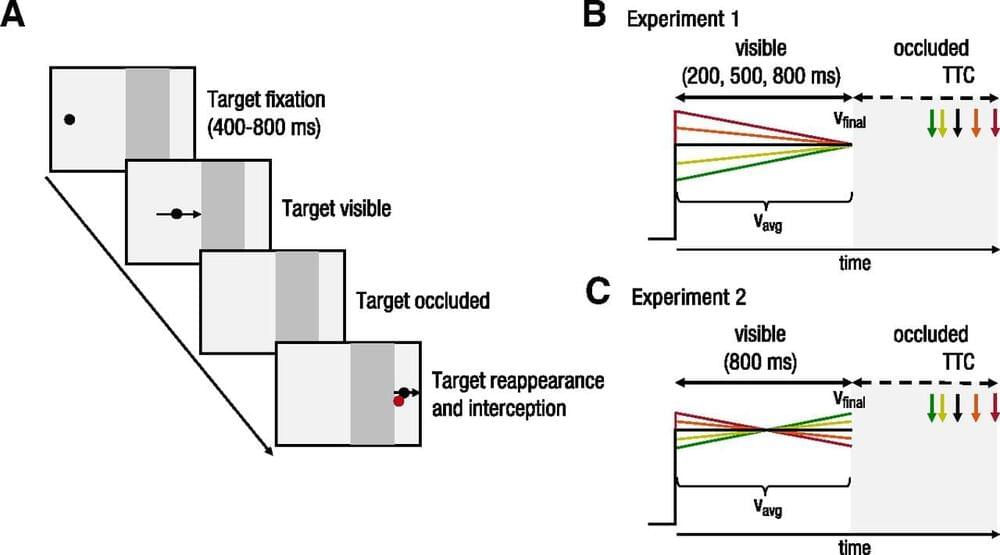Clone Robotics is going to impressive lengths to make sure its “intelligent androids” will have some of the most human-like hands in the business, and watching the way their hydraulic “muscles” move under a transparent skin is absolutely hypnotic.
Get the latest international news and world events from around the world.
Three Body Problem
Recently I had the pleasure of reading what is likely the most terrifying science fiction book series I’ve ever read. I’ve always enjoyed scary stories. As a kid, I read anthologies like goosebumps or scary Stories to Tell in the Dark. But I didn’t know true fear until I encountered the works of Stephen King, and H.P. Lovecraft in my teenage years. Lovecraft’s works opened up such terrifying vistas of thought that I would while reading them become transfixed and filled with ultimate existential dread. The cosmic terrors he wrote about in his stories struck me as somehow realer than the monsters and ghost of goosebumps and that is probably because in truth Lovecraft, being the flawed man he was, was expressing a very simple fear, fear of the unknown. And what is more unknown than the blackness of space. I must admit that not since my early teenage years have I felt such poignant terror while reading as I did when first encountering the work of Lovecraft. That Is until I read the Remembrance of Earth’s past trilogy.
There are three books in this series, The Three-Body Problem, The Dark Forest, and Deaths End, there is also an additional book not written by Cixin Liu himself, called Redemption of Time. The first books in the series The Three-Body Problems start off as a mystery. As the story unfolds it starts to feel as though we are reading the unfolding of some grand conspiracy, a conspiracy written into the fabric of the universe itself. Early on in the story, you find out that scientists around the world have been killing themselves. A note left behind by one of the late scientists, Yang Dong ominously added to the mysteries, saying only:
All the evidence points to a single conclusion: Physics has never existed, and will never exist. I know what I’m doing is irresponsible. But I have no choice.
We base so much of our own perception of what we consider to be reality on what we can observe. We look upon the universe as it is and extrapolate from that point. But what if we will never be able to know the truth about the universe. What if the universal constants are not constant. What if the laws of physics are not laws, what if reality isn’t real. Before we get any further into the video I have to give a spoiler warning. If you have not read the series I highly recommend you stop this video and do so. If you’ve read the series, or just don’t care about spoilers then continue forth. Now we won’t be getting into all of the details of the series, I’ll be giving context to why exactly I think this series is so unnerving.
Get this book: https://amzn.to/3xFTS6P
Cover art: The Fourth Dimension by Marc Simonetti.


Look: Webb and Hubble telescopes team up to image a dust-shrouded galaxy
Astronomers studying cosmic dust in a spiral galaxy discovered an even more distant galaxy.
And the light being shed, in this case, comes partly from the elliptical galaxy on the left side of the image. Astronomers used Webb and Hubble to watch the light from the elliptical galaxy, which is farther away than its partner, shining through the dusty arms of the spiral galaxy. The two galaxies are close neighbors, but not quite close enough to be in danger of colliding and merging.
In fact, the elliptical galaxy on the left is doing a lot of work in this image. Not only is it backlighting the dust in its neighbor’s spiral arms, but it’s providing a gravitational lens to reveal a distant galaxy that astronomers had never seen before.
A galaxy far, far away — The reddish arc just above and to the left of the elliptical galaxy, at about the 10 o’clock position, is actually another galaxy, stretched and warped by the effects of the gravitational lens, which bends the distant galaxy’s light around the closer elliptical galaxy’s mass. A red dot at about the 4 o’clock position is another refracted image of the same distant galaxy.

A Trial Run for Smart Streaming Readouts
Jefferson Lab tests a next-generation data acquisition scheme
Nuclear physics experiments worldwide are becoming ever more data intensive as researchers probe ever more deeply into the heart of matter. To get a better handle on the data, nuclear physicists are now turning to artificial intelligence and machine learning methods to help sift through the torrent in real-time.
A recent test of two systems that employ such methods at the U.S. Department of Energy’s Thomas Jefferson National Accelerator Facility found that they can, indeed, enable real-time processing of raw data. Such systems could result in a streamlined data analysis process that is faster and more efficient, while also keeping more of the original data for future analysis than conventional systems. An article describing this work was recently published in The European Physical Journal Plus .

Discovery broadens scope of use of CRISPR gene editing
A team of researchers at Northwestern University has devised a new platform for gene editing that could inform the future application of a near-limitless library of CRISPR-based therapeutics.
Using chemical design and synthesis, the team brought together the Nobel-prize winning technology with therapeutic technology born in their own lab to overcome a critical limitation of CRISPR. Specifically, the groundbreaking work provides a system to deliver the cargo required for generating the gene editing machine known as CRISPR-Cas9. The team developed a way to transform the Cas-9 protein into a spherical nucleic acid (SNA) and load it with critical components as required to access a broad range of tissue and cell types, as well as the intracellular compartments required for gene editing.
The research, published today in a paper titled, “CRISPR Spherical Nucleic Acids,” in the publication Journal of the American Chemical Society, and shows how CRISPR SNAs can be delivered across the cell membrane and into the nucleus while also retaining bioactivity and gene editing capabilities.

Humans Can Track But Fail to Predict Accelerating Objects
Objects in our visual environment often move unpredictably and can suddenly speed up or slow down. The ability to account for acceleration when interacting with moving objects can be critical for survival. Here, we investigate how human observers track an accelerating target with their eyes and predict its time of reappearance after a temporal occlusion by making an interceptive hand movement. Before occlusion, observers smoothly tracked the accelerating target with their eyes. At the time of occlusion, observers made a predictive saccade to the location where they subsequently intercepted the target with a quick pointing movement.
TransVision 2022 Madrid
Today there might not be a cure to save your life. What if the cure were available tomorrow? Biostasis (cryonics) is a possibility for keeping you around long enough for the cure.
How Big Is the Universe?
Keep exploring at https://brilliant.org/APERTURE. Get started for free, and hurry—the first 200 people get 20% off an annual premium subscription.
Read the story: https://aperture.gg/blogs/the-universe/how-big-is-the-universe.
Merch: https://aperture.gg/merch.
Have you ever looked up at the night sky and pondered about your very own existence? Maybe you were camping out with some friends, or all alone marvelling at the big canvas of darkness plastered with countless glowing stars. Well, you’re not alone. Looking above and contemplating the sheer immensity of the Universe is something humans have been doing since the dawn of time.
Stay connected with Aperture:
Website: https://aperture.gg/
Instagram: https://www.instagram.com/theapertureyt/
Twitter: https://twitter.com/TheApertureYT
Check out our other channels:
What If: https://bit.ly/youtube-What-If.
How to Survive: https://bit.ly/how-to-survive-show.
Crazy Creatures: https://bit.ly/crazy-creatures-show.
Your Body On: https://bit.ly/your-body-on-show.
Origins of Food: https://bit.ly/origins-of-food.
Versus: https://bit.ly/versus-show.
WTF Did I Just Watch: https://bit.ly/wtf-did-i-just-watch.
Questions or concerns? Contact us at https://underknown.com/contact/
